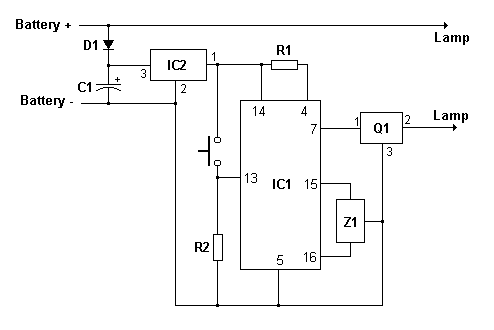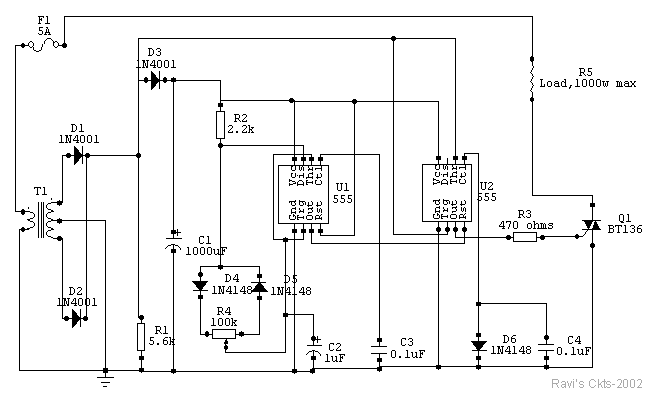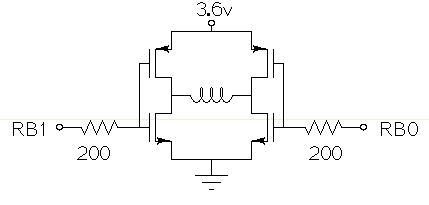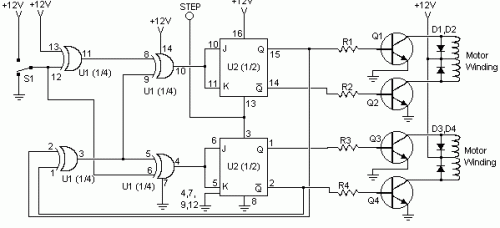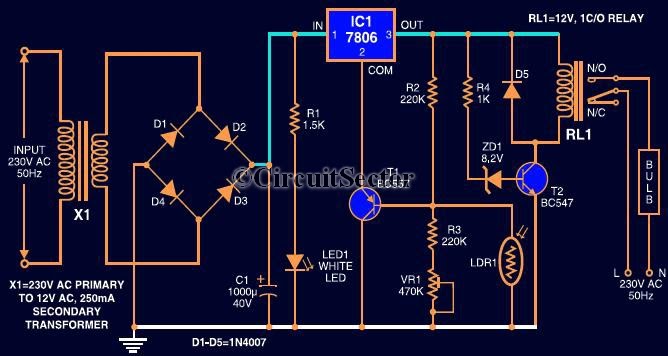
Single-setpoint temperatre controller
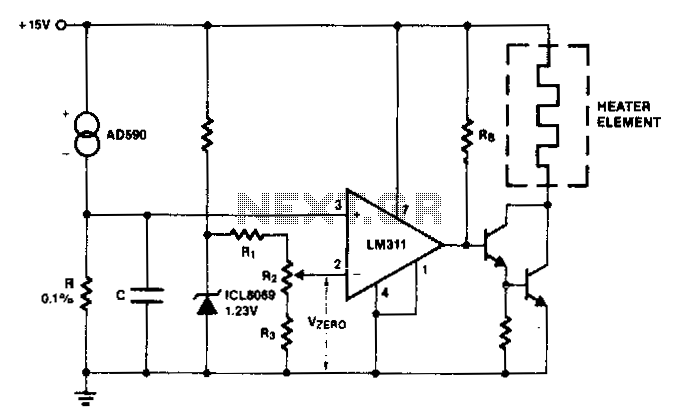
The AD590 generates a voltage that varies with temperature across resistor R, while capacitor C serves to filter out noise. To establish a zero-scale voltage, resistor R2 is adjusted. For the Celsius temperature scale, R should be set to 1 kΩ and the zero voltage (Vzero) to 0.73 volts. For the Fahrenheit scale, R should also be set to 1 kΩ, but Vzero should be adjusted to 0.60 volts.
The AD590 is a precision temperature sensor that outputs a current proportional to the absolute temperature. This current can be converted to a voltage using a resistor, R, which is connected in series with the sensor. The relationship between the current output and the voltage across R is given by Ohm's law, where the voltage drop (V) across R is equal to the current (I) multiplied by the resistance (R).
In this configuration, capacitor C is included to filter out any high-frequency noise that may affect the accuracy of the temperature readings. The value of R is crucial, as it determines the sensitivity and range of the voltage output. A standard value of 1 kΩ is often used, as it provides a suitable balance between voltage output and power dissipation.
To calibrate the output voltage to a specific temperature scale, resistor R2 is introduced. This resistor allows for the adjustment of the zero-scale voltage (Vzero). For the Celsius scale, setting R to 1 kΩ yields a Vzero of 0.73 volts, aligning the output with the Celsius temperature readings. Conversely, for the Fahrenheit scale, maintaining R at 1 kΩ adjusts Vzero to 0.60 volts, ensuring accurate temperature representation in Fahrenheit.
This configuration is commonly utilized in various applications, including temperature monitoring systems, HVAC controls, and industrial process automation, where precise temperature measurement is essential.The AD590 produces a temperature-dependent voltage across R (C is for filtering noise). Setting R2 produces a scale-zero voltage. For the Celsius scale, make R = 1 K and Vzero = 073 volts For Fahrenheit, R = 1 K and Vzero = 060 volts.
The AD590 is a precision temperature sensor that outputs a current proportional to the absolute temperature. This current can be converted to a voltage using a resistor, R, which is connected in series with the sensor. The relationship between the current output and the voltage across R is given by Ohm's law, where the voltage drop (V) across R is equal to the current (I) multiplied by the resistance (R).
In this configuration, capacitor C is included to filter out any high-frequency noise that may affect the accuracy of the temperature readings. The value of R is crucial, as it determines the sensitivity and range of the voltage output. A standard value of 1 kΩ is often used, as it provides a suitable balance between voltage output and power dissipation.
To calibrate the output voltage to a specific temperature scale, resistor R2 is introduced. This resistor allows for the adjustment of the zero-scale voltage (Vzero). For the Celsius scale, setting R to 1 kΩ yields a Vzero of 0.73 volts, aligning the output with the Celsius temperature readings. Conversely, for the Fahrenheit scale, maintaining R at 1 kΩ adjusts Vzero to 0.60 volts, ensuring accurate temperature representation in Fahrenheit.
This configuration is commonly utilized in various applications, including temperature monitoring systems, HVAC controls, and industrial process automation, where precise temperature measurement is essential.The AD590 produces a temperature-dependent voltage across R (C is for filtering noise). Setting R2 produces a scale-zero voltage. For the Celsius scale, make R = 1 K and Vzero = 073 volts For Fahrenheit, R = 1 K and Vzero = 060 volts.
